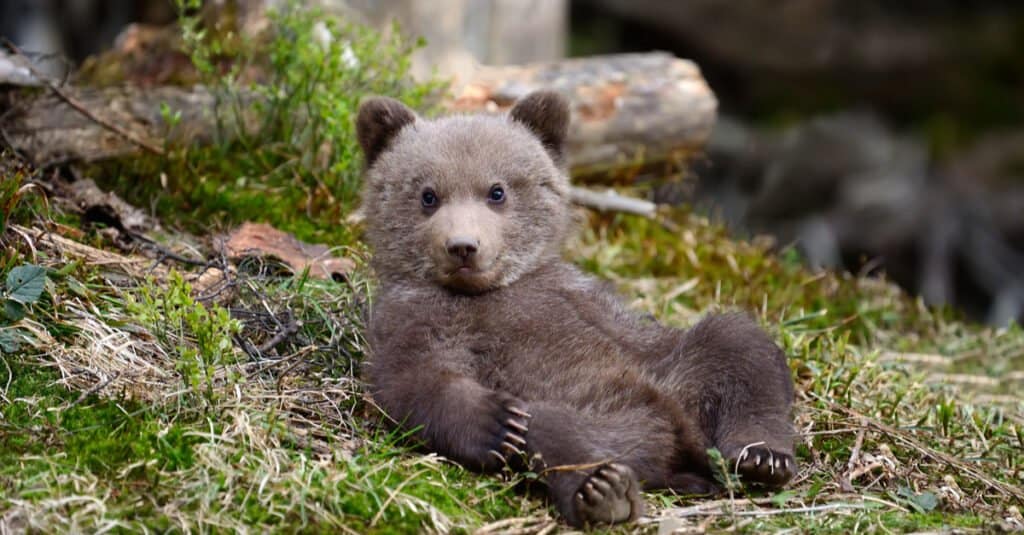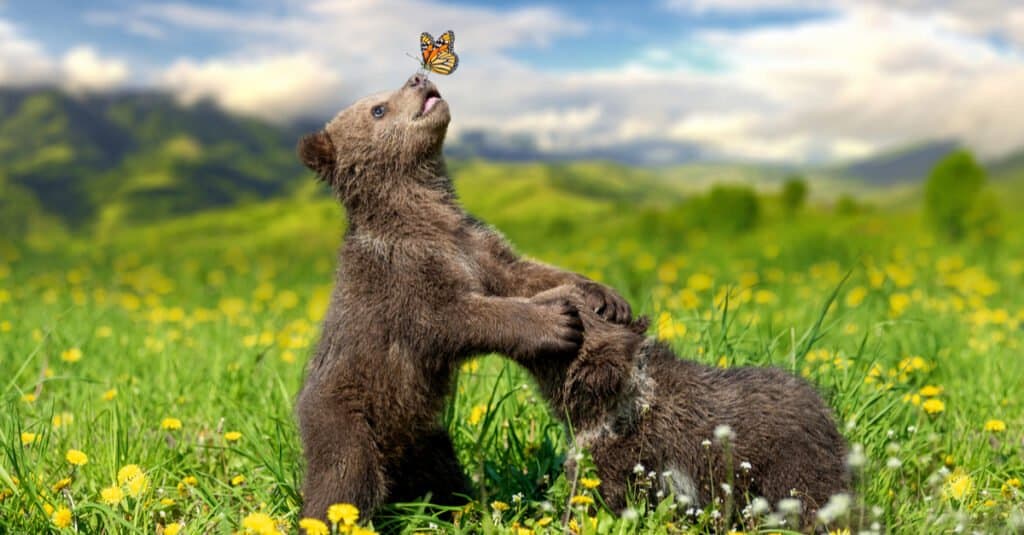Grizzly bears are one of the most fascinating creatures on earth, and their size is definitely a major part of what makes them so awe-inspiring. In this article, we’re going to explore just how much grizzly bears weigh, looking at everything from average weights to the biggest recorded specimens ever found. Whether you’re a wildlife enthusiast or simply curious about these magnificent animals, there’s plenty here to pique your interest and deepen your understanding of grizzlies’ physical characteristics. So let’s dive in and discover just how heavy these iconic mammals can get!
How Much Do Grizzly Bears Weigh?

Grizzly bears are known for their impressive size and strength, making them a formidable presence in the wild. But just how much do these massive creatures actually weigh? The average weight of an adult male grizzly bear can range anywhere from 400 to 600 pounds, while females typically weigh between 290 and 440 pounds. However, it’s not uncommon for some grizzlies to exceed these averages – particularly those living in areas with abundant food sources.
Adult grizzlies typically reach their full size by the time they are around five years old. At this point, males will generally be larger than females due to differences in hormonal development. In addition to their sheer size, grizzlies also possess incredible strength – able to lift objects weighing up to several hundred pounds with ease.
Despite being such heavy animals, grizzlies are surprisingly agile and quick on their feet when needed. They are also excellent swimmers and climbers, thanks to powerful muscles that allow them to navigate difficult terrain.
Overall, the weight of a grizzly bear can vary greatly depending on factors like age, gender, diet, and habitat location. However, one thing is certain: encountering one of these majestic beasts in the wild is an experience you won’t soon forget!
To read about the largest grizzly bear ever recorded, click here.
| Bear Age | Weight |
|---|---|
| Baby Grizzly Bear | 1 pound at birth |
| Adolescent Grizzly Bear | 99 pounds at 2 years old |
| Adult Female Grizzly Bear | 290-440 pounds |
| Adult Male Grizzly Bear | 400-600 pounds |
What Do Grizzly Bears Eat?

Grizzly bears are omnivores, meaning they eat both plants and animals. Their diet varies depending on the season and availability of food sources. In the spring, grizzlies primarily feed on fresh green vegetation such as grasses, sedges, and roots. As summer approaches, their diet shifts to include berries like huckleberries and serviceberries.
In late summer and fall, grizzly bears begin to prepare for hibernation by consuming large amounts of high-calorie foods such as nuts from whitebark pine trees or spawning salmon in rivers. It’s during this time that they can gain up to 3 pounds per day!
While meat makes up a smaller portion of their diet compared to plant-based foods, grizzlies have been known to hunt small mammals like ground squirrels or deer fawns. They may also scavenge carrion from other animals that have died naturally or were killed by predators.
Overall, an adult male grizzly bear can consume up to 90 pounds of food each day in preparation for winter hibernation, when their metabolism slows down significantly.
Where Do Grizzly Bears Live?

Grizzly bears have a vast range, with populations found in North America and Eurasia. In North America, grizzlies can be found from Alaska to Mexico, while in Eurasia, they are primarily located in Russia. Within their ranges, grizzly bears prefer habitats such as forests, meadows, and tundra regions.
In North America specifically, grizzlies tend to reside near rivers and streams for easy access to fish during the spawning season. As adaptable creatures, grizzly bears are able to survive in various climates ranging from cold arctic environments to warmer temperate forests. However, human encroachment on natural habitats has caused a decline in grizzly bear populations over recent years leading experts to classify them as threatened species that need conservation measures implemented urgently if we want them around for future generations.
The Population of Grizzly Bears

Grizzly bears love to fish and eat salmon.
©AndreAnita/Shutterstock.com
The population of grizzly bears in North America is estimated to be around 60,000 bears. The majority of these bears are found in Alaska and Canada, with approximately 30,000 grizzlies living in Alaska and nearly 29,000 inhabiting Canada. In Alaska specifically, the coastal regions are where most of the wild grizzly population resides due to an abundance of salmon that provide a vital food source for these animals. Similarly, in British Columbia – an area known for its beautiful coastlines – there is a significant population of Canadian grizzly bears located near water sources.
Contrarily, the lower 48 states have far fewer numbers when it comes to grizzly bear populations. Northwestern Montana is home to roughly 1,000 wild grizzlies, while another thousand can be found residing within Yellowstone National Park’s boundaries. Idaho supports around one hundred Grizzlies, whereas Washington State only has a handful left.
Despite their relatively low numbers outside of Alaska and Canada, however, Grizzly Bears remain awe-inspiring creatures that have captured people’s imaginations with their strength and resilience against humanity’s encroachment on wilderness areas across North America.
Threats

Grizzly bears most often have two babies at once.
©Volodymyr Burdiak/Shutterstock.com
Grizzly bears, like many other species in the animal kingdom, are facing a number of threats that have led to their declining population numbers. One major threat is habitat loss and fragmentation due to human activities such as logging, mining, and urbanization. As humans continue to encroach on grizzly bear territory, they disrupt feeding habits and mating patterns, which can lead to decreased reproduction rates.
Another significant threat is climate change. Rising temperatures and changing weather patterns are altering food availability for grizzly bears by affecting the growth cycles of plants and reducing the amount of salmon in rivers during the spawning season. This lack of food increases competition among bears and leads to weakened immune systems making them more vulnerable to disease.
Human-caused mortality factors also play a role in the decline of grizzly bear populations, including hunting, poaching for fur or body parts (such as claws or gallbladders), accidental deaths from vehicles, or electrocution from power lines.
Overall, it is clear that humans are the biggest threat facing grizzly bear populations today, which requires urgent attention if we hope to preserve these magnificent creatures for future generations.
Reproduction

Grizzly bears have a low reproduction rate, which is not helping their survival rates much.
©Volodymyr Burdiak/Shutterstock.com
Female grizzly bears, also known as sows, have a low reproductive rate compared to other North American mammals. This is due to the fact that they do not reach sexual maturity until they are at least five years old. Once mature, female grizzly bears typically give birth to one to four cubs in a litter, with two being the most common number of offspring. At birth, these cubs are incredibly small and only weigh about 16 ounces.
The mother bear is fiercely protective of her young and will attack if she feels her cubs are in danger. She takes care of them for up to two years before mating again. In some cases, female grizzly bears may not reproduce for three or more years, depending on environmental factors.
After mating with a male in the summer months, the female delays implantation of the embryo until hibernation. If she does not receive proper nutrition and calories during this time period, it can lead to miscarriage. The gestation period lasts between 180-250 days.
Once they are born, these tiny creatures rely solely on their mother’s milk for sustenance until summer arrives and food sources become readily available. As they grow rapidly under their mother’s protection over the course of two years, these cubs can gain an impressive amount of weight – starting from just shy of two pounds at birth and growing up into adolescence in the hundred-pound range.
Weaning from their mother’s milk takes place after approximately eight months old, marking an important milestone in the life cycle of grizzly bears. During this time, young cubs must learn to fend for themselves as they begin to explore their environment and seek out new sources of food. The role that mothers play in raising and protecting their offspring during this critical period cannot be overstated. Without her guidance and care, many young cubs would fail to survive beyond infancy.
Despite the challenges faced by young grizzly bears as they grow and mature into adulthood, these majestic animals remain a symbol of strength and resilience in our natural world. With proper conservation efforts aimed at preserving wild habitats where these creatures thrive, we can ensure that future generations will continue to marvel at the beauty and power of grizzly bears for years to come.
The photo featured at the top of this post is © iStock.com/Jess Bray
Thank you for reading! Have some feedback for us? Contact the AZ Animals editorial team.






